Andre G. C. Pacheco
Echoes of Power: Investigating Geopolitical Bias in US and China Large Language Models
Mar 20, 2025Abstract:Large Language Models (LLMs) have emerged as powerful tools for generating human-like text, transforming human-machine interactions. However, their widespread adoption has raised concerns about their potential to influence public opinion and shape political narratives. In this work, we investigate the geopolitical biases in US and Chinese LLMs, focusing on how these models respond to questions related to geopolitics and international relations. We collected responses from ChatGPT and DeepSeek to a set of geopolitical questions and evaluated their outputs through both qualitative and quantitative analyses. Our findings show notable biases in both models, reflecting distinct ideological perspectives and cultural influences. However, despite these biases, for a set of questions, the models' responses are more aligned than expected, indicating that they can address sensitive topics without necessarily presenting directly opposing viewpoints. This study highlights the potential of LLMs to shape public discourse and underscores the importance of critically assessing AI-generated content, particularly in politically sensitive contexts.
Learning multiplane images from single views with self-supervision
Oct 19, 2021
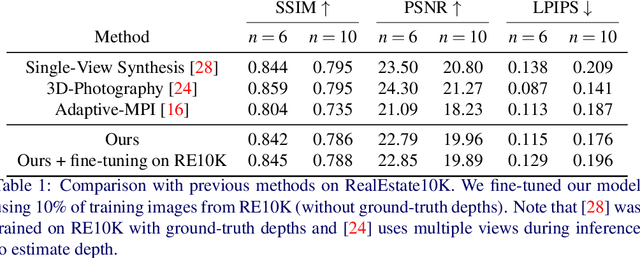


Abstract:Generating static novel views from an already captured image is a hard task in computer vision and graphics, in particular when the single input image has dynamic parts such as persons or moving objects. In this paper, we tackle this problem by proposing a new framework, called CycleMPI, that is capable of learning a multiplane image representation from single images through a cyclic training strategy for self-supervision. Our framework does not require stereo data for training, therefore it can be trained with massive visual data from the Internet, resulting in a better generalization capability even for very challenging cases. Although our method does not require stereo data for supervision, it reaches results on stereo datasets comparable to the state of the art in a zero-shot scenario. We evaluated our method on RealEstate10K and Mannequin Challenge datasets for view synthesis and presented qualitative results on Places II dataset.
A Smartphone based Application for Skin Cancer Classification Using Deep Learning with Clinical Images and Lesion Information
Apr 28, 2021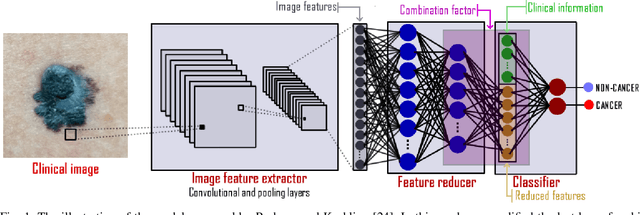
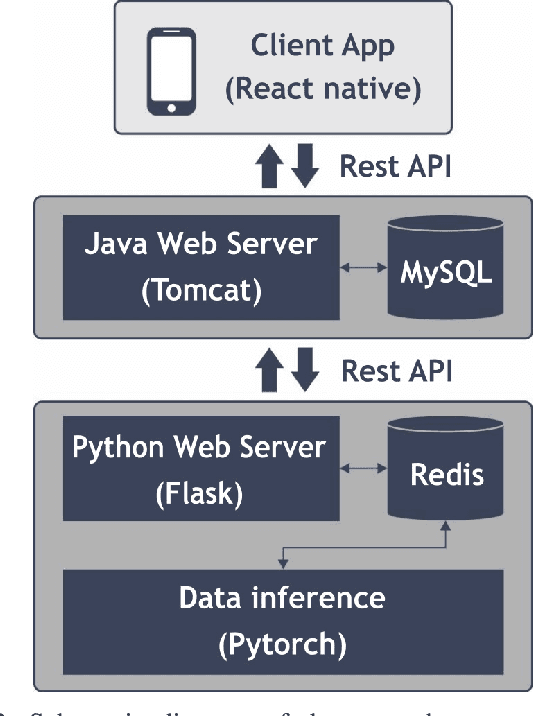

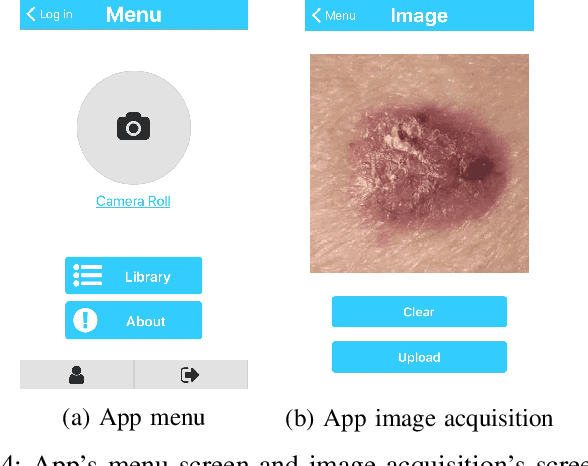
Abstract:Over the last decades, the incidence of skin cancer, melanoma and non-melanoma, has increased at a continuous rate. In particular for melanoma, the deadliest type of skin cancer, early detection is important to increase patient prognosis. Recently, deep neural networks (DNNs) have become viable to deal with skin cancer detection. In this work, we present a smartphone-based application to assist on skin cancer detection. This application is based on a Convolutional Neural Network(CNN) trained on clinical images and patients demographics, both collected from smartphones. Also, as skin cancer datasets are imbalanced, we present an approach, based on the mutation operator of Differential Evolution (DE) algorithm, to balance data. In this sense, beyond provides a flexible tool to assist doctors on skin cancer screening phase, the method obtains promising results with a balanced accuracy of 85% and a recall of 96%.
Recent advances in deep learning applied to skin cancer detection
Dec 06, 2019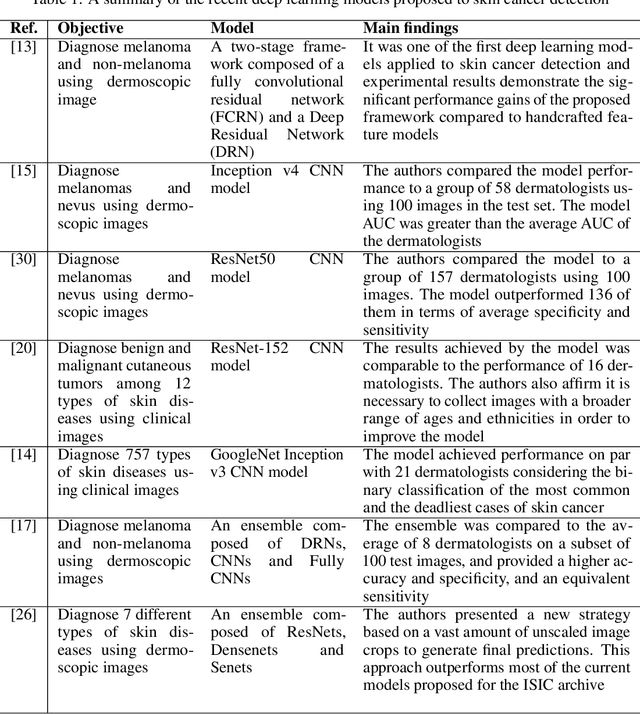
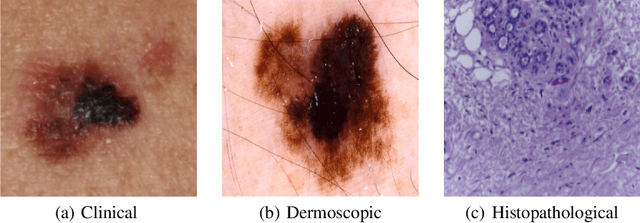
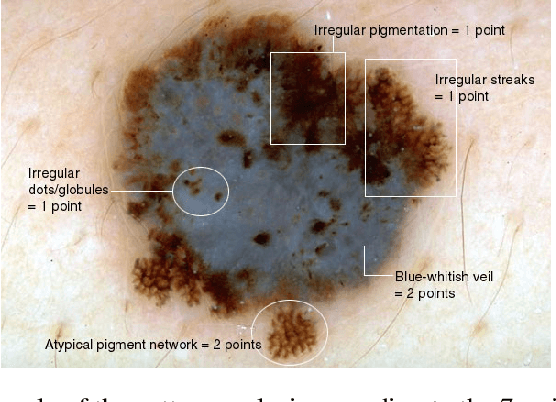
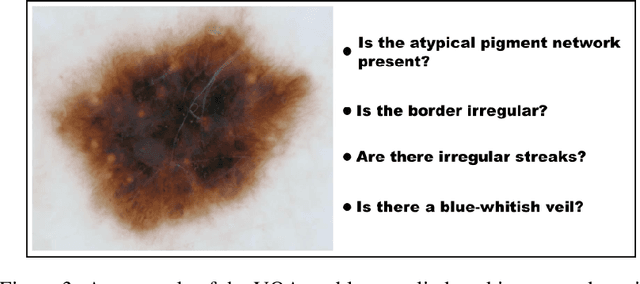
Abstract:Skin cancer is a major public health problem around the world. Its early detection is very important to increase patient prognostics. However, the lack of qualified professionals and medical instruments are significant issues in this field. In this context, over the past few years, deep learning models applied to automated skin cancer detection have become a trend. In this paper, we present an overview of the recent advances reported in this field as well as a discussion about the challenges and opportunities for improvement in the current models. In addition, we also present some important aspects regarding the use of these models in smartphones and indicate future directions we believe the field will take.
The impact of patient clinical information on automated skin cancer detection
Sep 16, 2019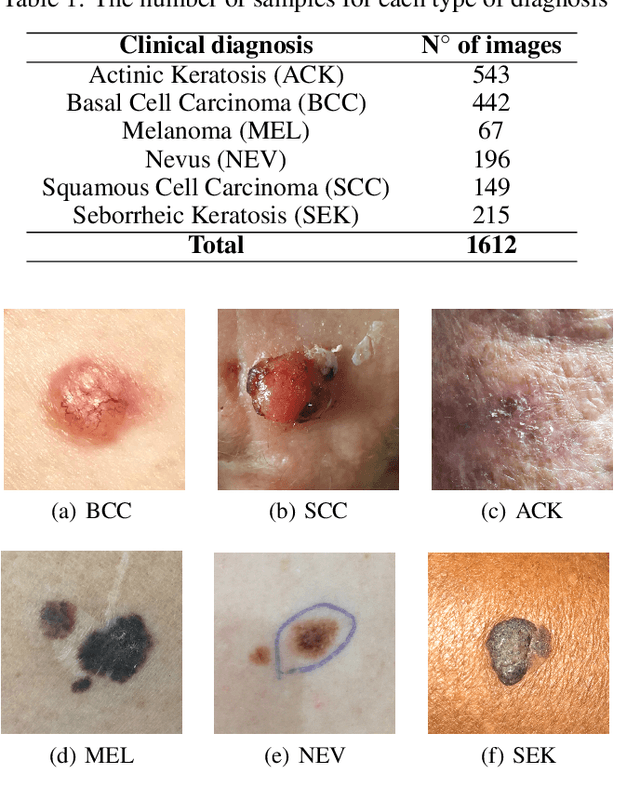
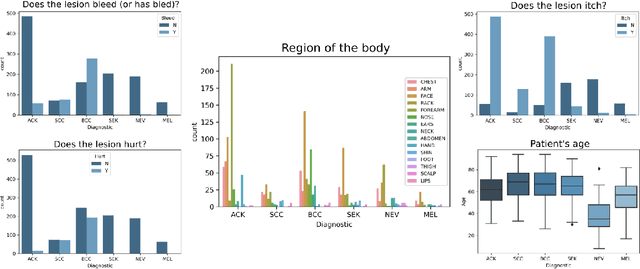

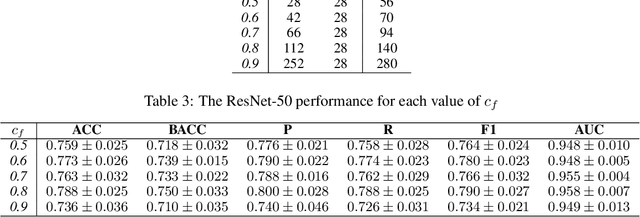
Abstract:Skin cancer is one of the most common types of cancer around the world. For this reason, over the past years, different approaches have been proposed to assist detect it. Nonetheless, most of them are based only on dermoscopy images and do not take into account the patient clinical information. In this work, first, we present a new dataset that contains clinical images, acquired from smartphones, and patient clinical information of the skin lesions. Next, we introduce a straightforward approach to combine the clinical data and the images using different well-known deep learning models. These models are applied to the presented dataset using only the images and combining them with the patient clinical information. We present a comprehensive study to show the impact of the clinical data on the final predictions. The results obtained by combining both sets of information show a general improvement of around 7% in the balanced accuracy for all models. In addition, the statistical test indicates significant differences between the models with and without considering both data. The improvement achieved shows the potential of using patient clinical information in skin cancer detection and indicates that this piece of information is important to leverage skin cancer detection systems.
Skin cancer detection based on deep learning and entropy to detect outlier samples
Sep 10, 2019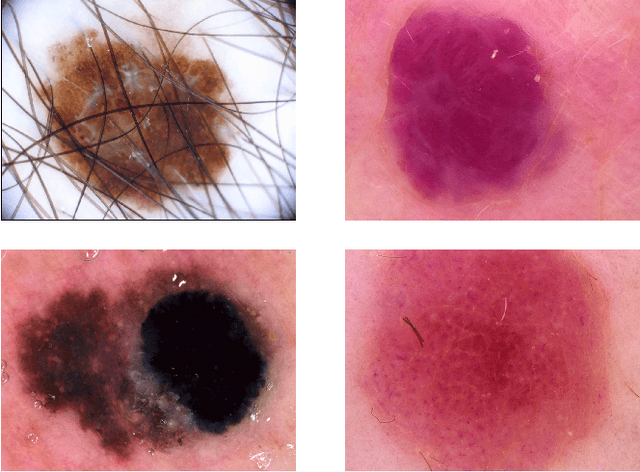
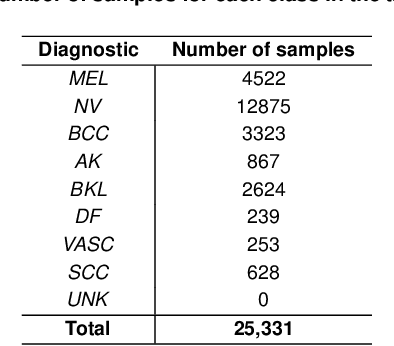
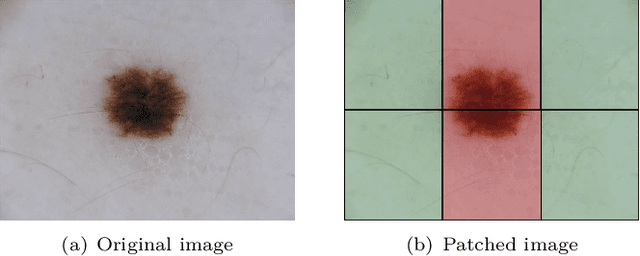
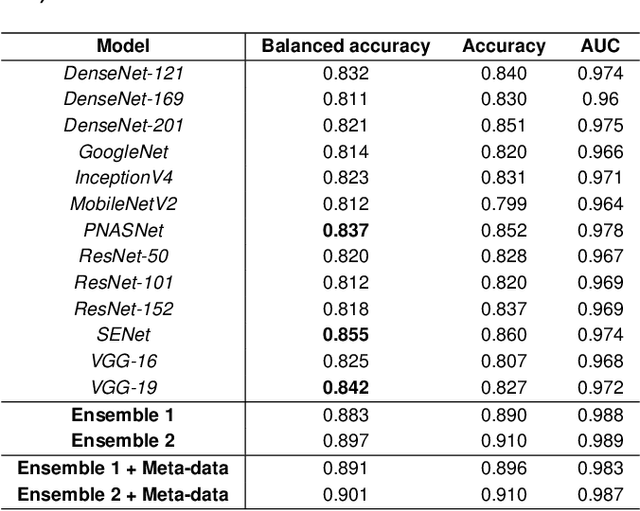
Abstract:We describe our methods to address both tasks of the ISIC 2019 challenge. The goal of this challenge is to provide the diagnostic for skin cancer using images and meta-data. There are nine classes in the dataset, nonetheless, one of them is an outlier and is not present on it. To tackle the challenge, we apply an ensemble of classifiers, which has 13 convolutional neural networks (CNN), we develop two approaches to handle the outlier class and we propose a straightforward method to use the meta-data along with the images. Throughout this report, we detail each methodology and parameters to make it easy to replicate our work. The results obtained are in accordance with the previous challenges and the approaches to detect the outlier class and to address the meta-data seem to be work properly.
Classificação de espécies de peixe utilizando redes neurais convolucional
May 09, 2019Abstract:Data classification is present in different real problems, such as recognizing patterns in images, differentiating defective parts in a production line, classifying benign and malignant tumors, among many others. Many of these problems have data patterns that are hard to identify, which requires more advanced techniques for resolution. Recently, several works addressing different artificial neural network architectures have been applied to solve classification problems. When the classification problem must be obtained through images, currently, the standard methodology is the use of convolutional neural networks. Thus, in this report convolutional neural networks are used to classify fish species. Classifica\c{c}\~ao de dados est\'a presente em diversos problemas reais, tais como: reconhecer padr\~oes em imagens, diferenciar pe\c{c}as defeituosas em uma linha de produ\c{c}\~ao, classificar tumores benignos e malignos, dentre diversas outras. Muitos desses problemas possuem padr\~oes de dados dif\'iceis de serem identificados, o que requer, consequentemente, t\'ecnicas mais avan\c{c}adas para sua resolu\c{c}\~ao. Recentemente, diversos trabalhos abordando diferentes arquiteturas de redes neurais artificiais v\^em sendo aplicados para solucionar problemas de classifica\c{c}\~ao. Quando a classifica\c{c}\~ao do problema deve ser obtida por meio de imagens, atualmente a metodologia padr\~ao \'e uso de redes neurais convolucionais. Sendo assim, neste trabalho s\~ao utilizadas redes neurais convolucionais para classifica\c{c}\~ao de esp\'ecies de peixes.
Ranking of classification algorithms in terms of mean-standard deviation using A-TOPSIS
Oct 22, 2016

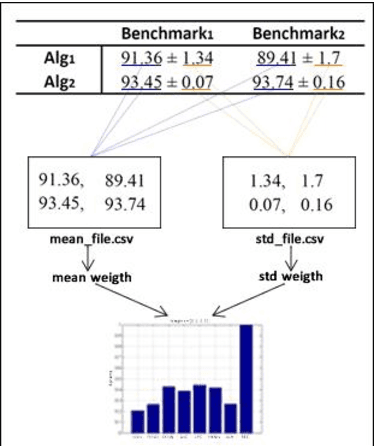
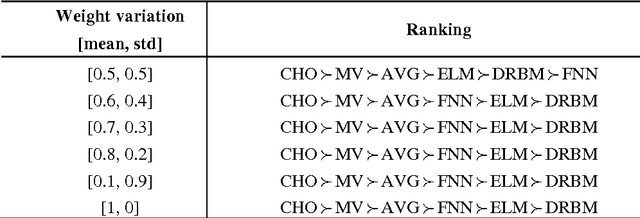
Abstract:In classification problems when multiples algorithms are applied to different benchmarks a difficult issue arises, i.e., how can we rank the algorithms? In machine learning it is common run the algorithms several times and then a statistic is calculated in terms of means and standard deviations. In order to compare the performance of the algorithms, it is very common to employ statistical tests. However, these tests may also present limitations, since they consider only the means and not the standard deviations of the obtained results. In this paper, we present the so called A-TOPSIS, based on TOPSIS (Technique for Order Preference by Similarity to Ideal Solution), to solve the problem of ranking and comparing classification algorithms in terms of means and standard deviations. We use two case studies to illustrate the A-TOPSIS for ranking classification algorithms and the results show the suitability of A-TOPSIS to rank the algorithms. The presented approach is general and can be applied to compare the performance of stochastic algorithms in machine learning. Finally, to encourage researchers to use the A-TOPSIS for ranking algorithms we also presented in this work an easy-to-use A-TOPSIS web framework.
 Add to Chrome
Add to Chrome Add to Firefox
Add to Firefox Add to Edge
Add to Edge